Large Red Damselfly (Pyrrhosoma nymphula)
STATUS : BREEDING IN SOMERSET
These normally kick-start the season both in Somerset and the UK and can appear as early as late March, although normally mid/late April is more likely.Relatively common although they do not appear in huge numbers like some of the other species.
Males have a bronze/black thorax with orange/reddish stripes, the abdomen is predominately red separated by thin black and orange bands, with more black markings at the end of the abdomen.
Females have three forms each defined by the amount of black they have on the top of the abdomen. Like the males, they have a bronze/black thorax with orange/reddish strips.
fulvipes - has the least black segments and is more similar to the male
typica - has more black segments
melanotum - all segments are black on top
All variations have been photographed.
These are only really going to be confused with Small Red Damselflies, but these are very rare. If you see a red damselfly it will more than likely be a Large Red. One of the easiest things to look for is the colour of their legs, Large Reds have black legs, Small Reds have reddish legs.
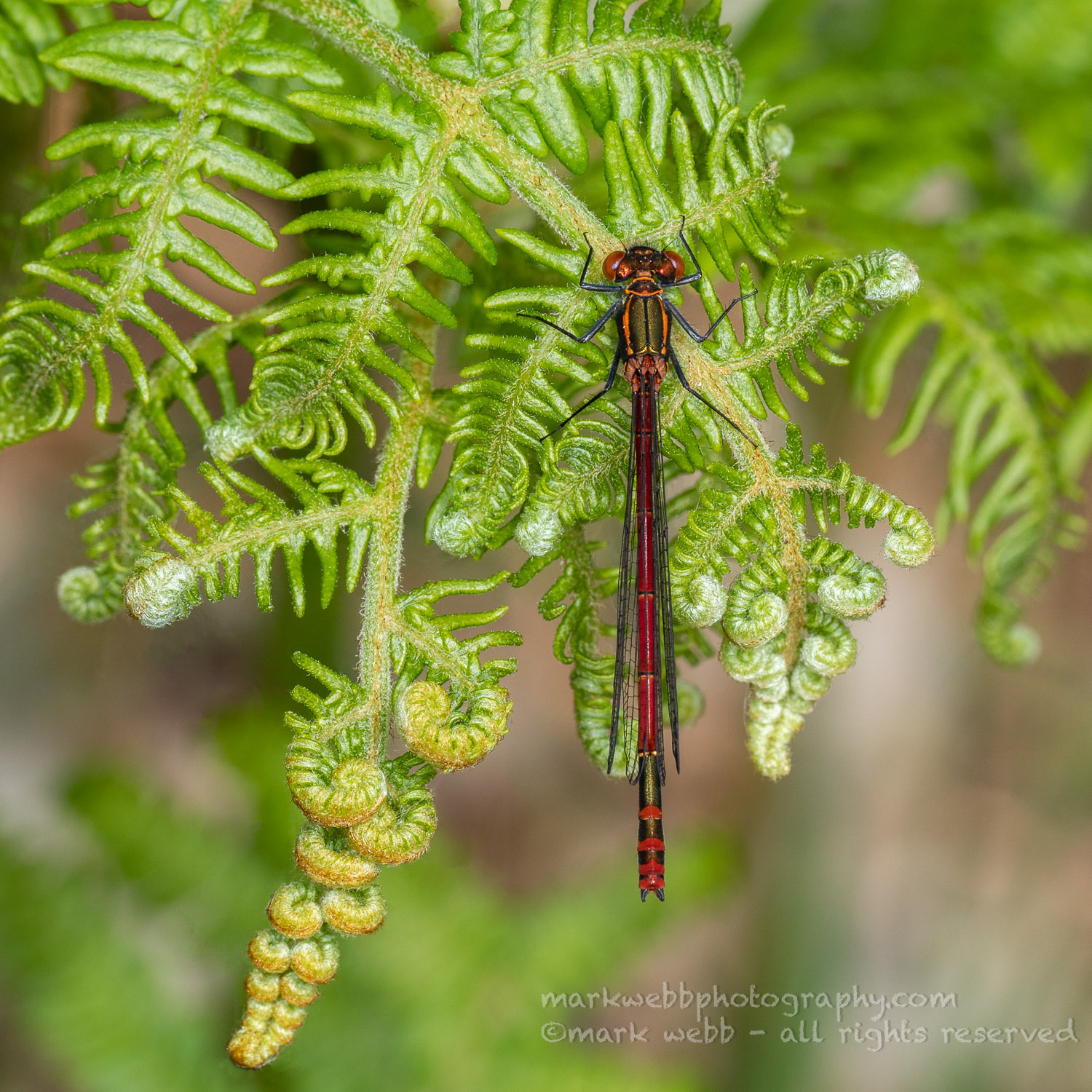
Male

Male
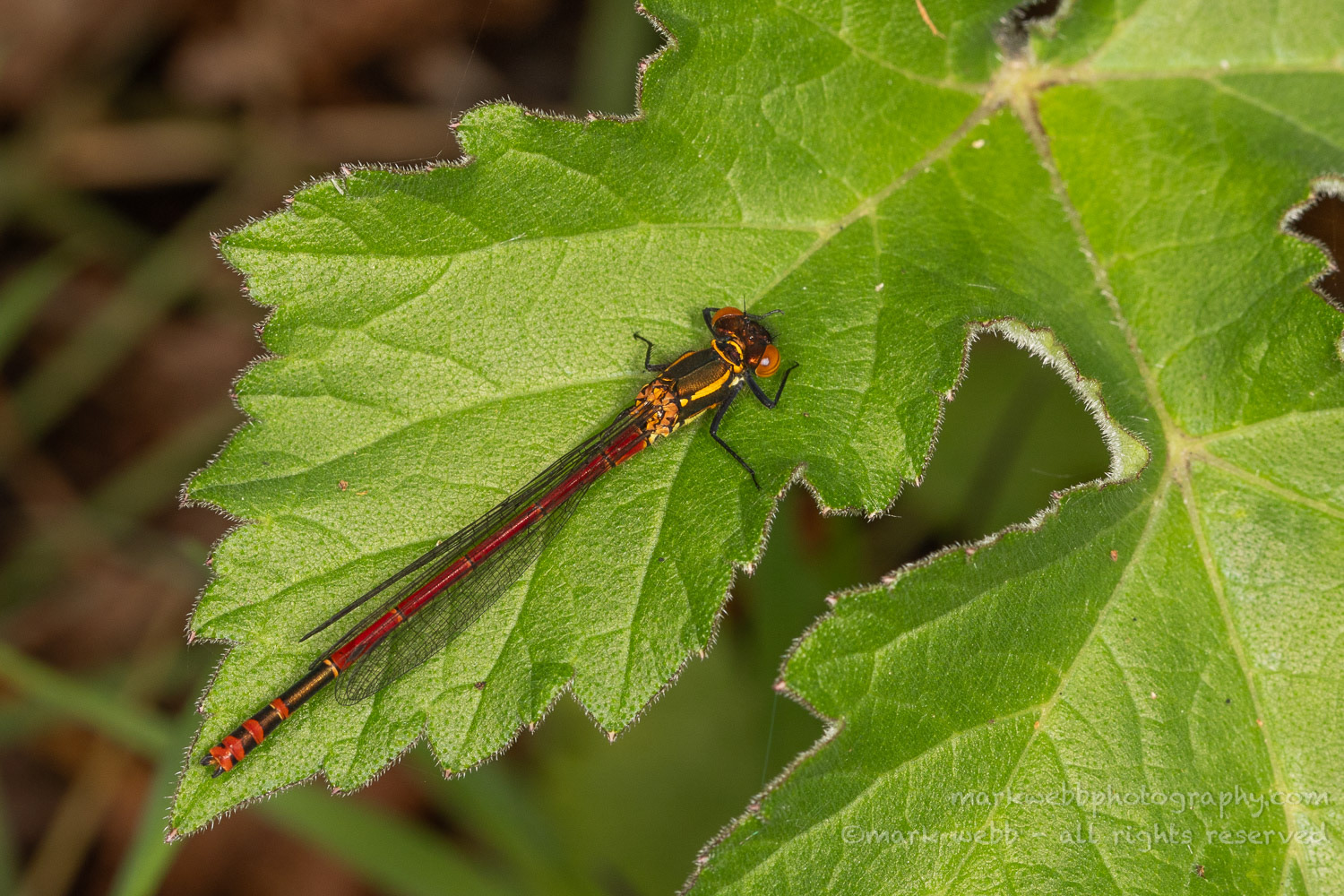
Male
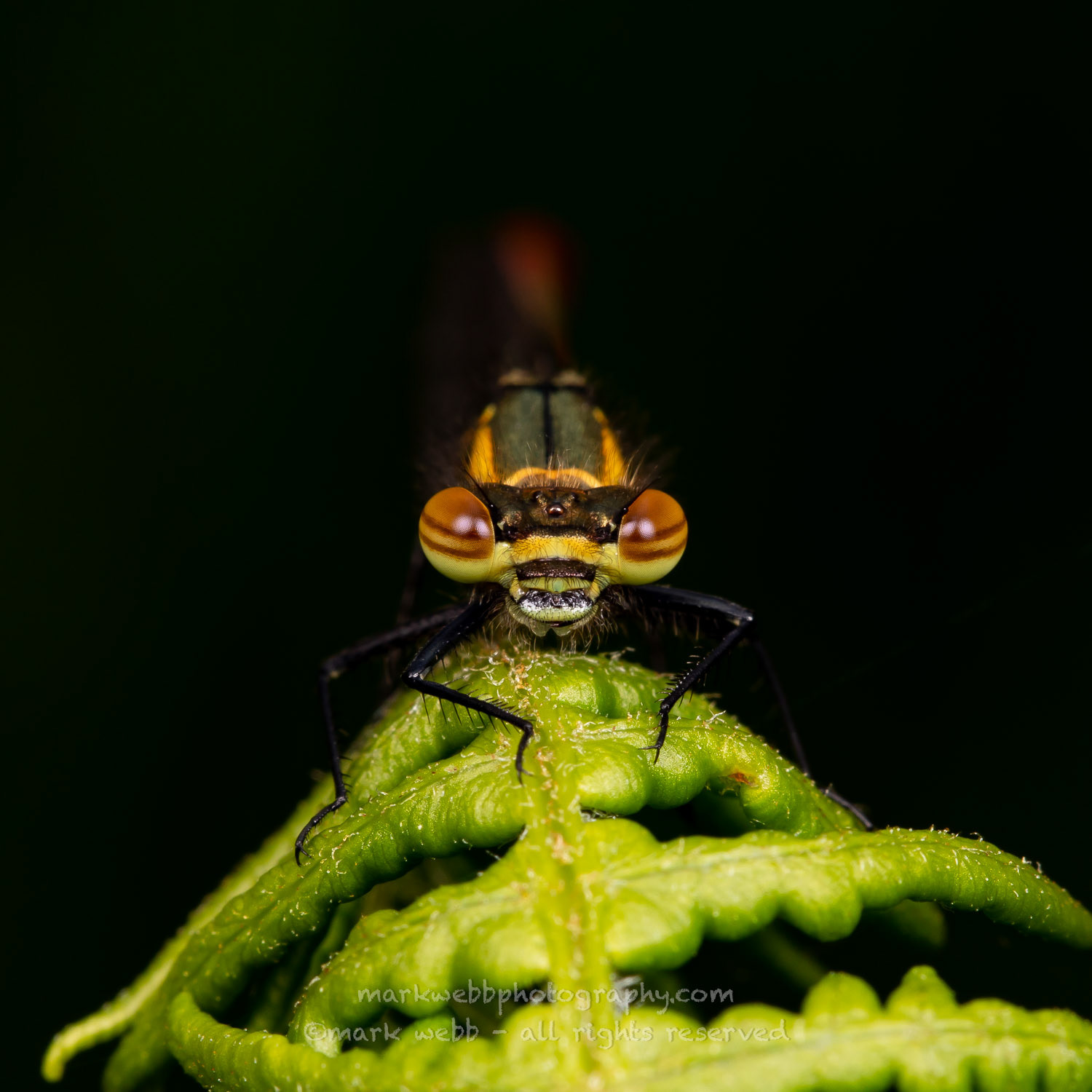
Male
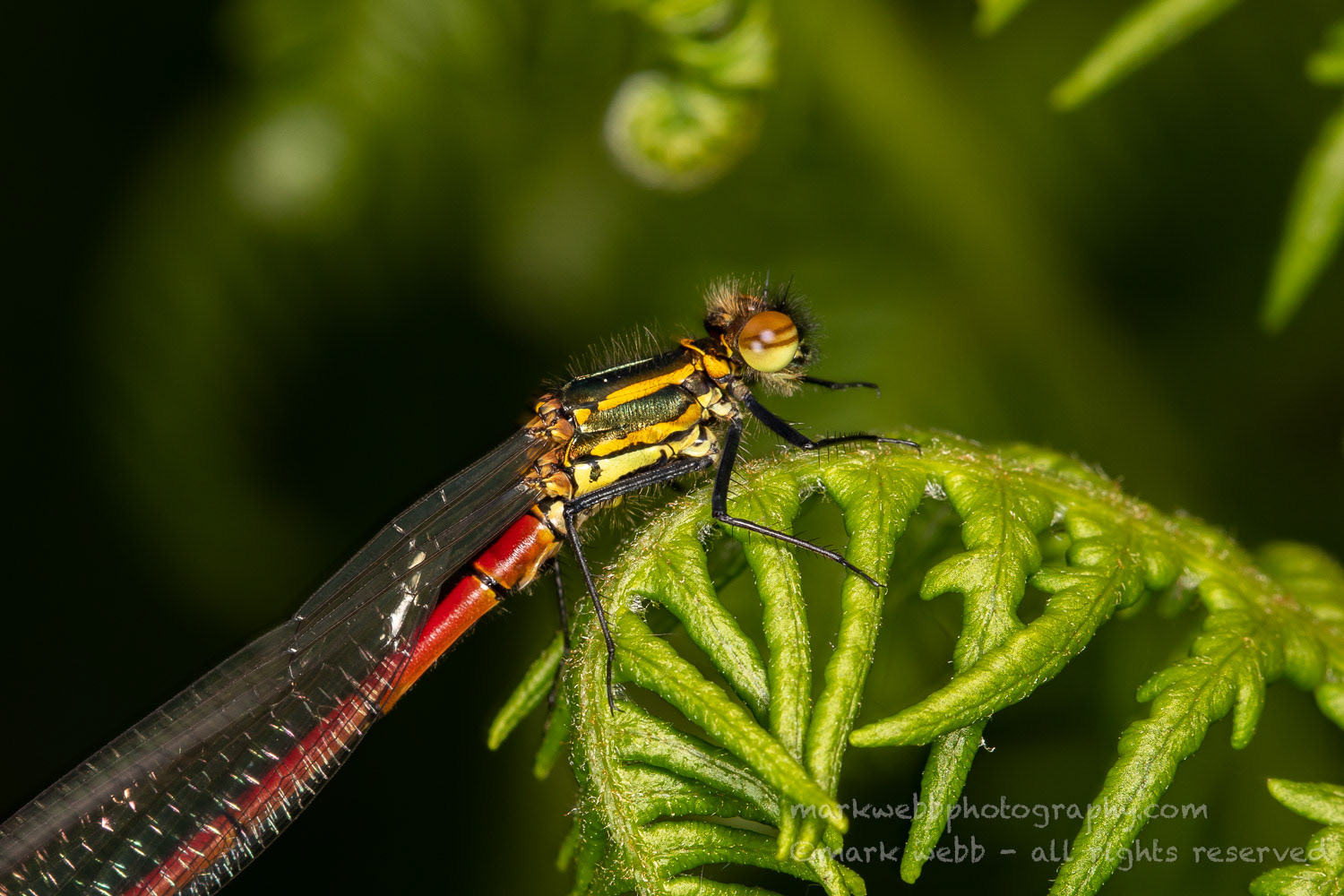
Male
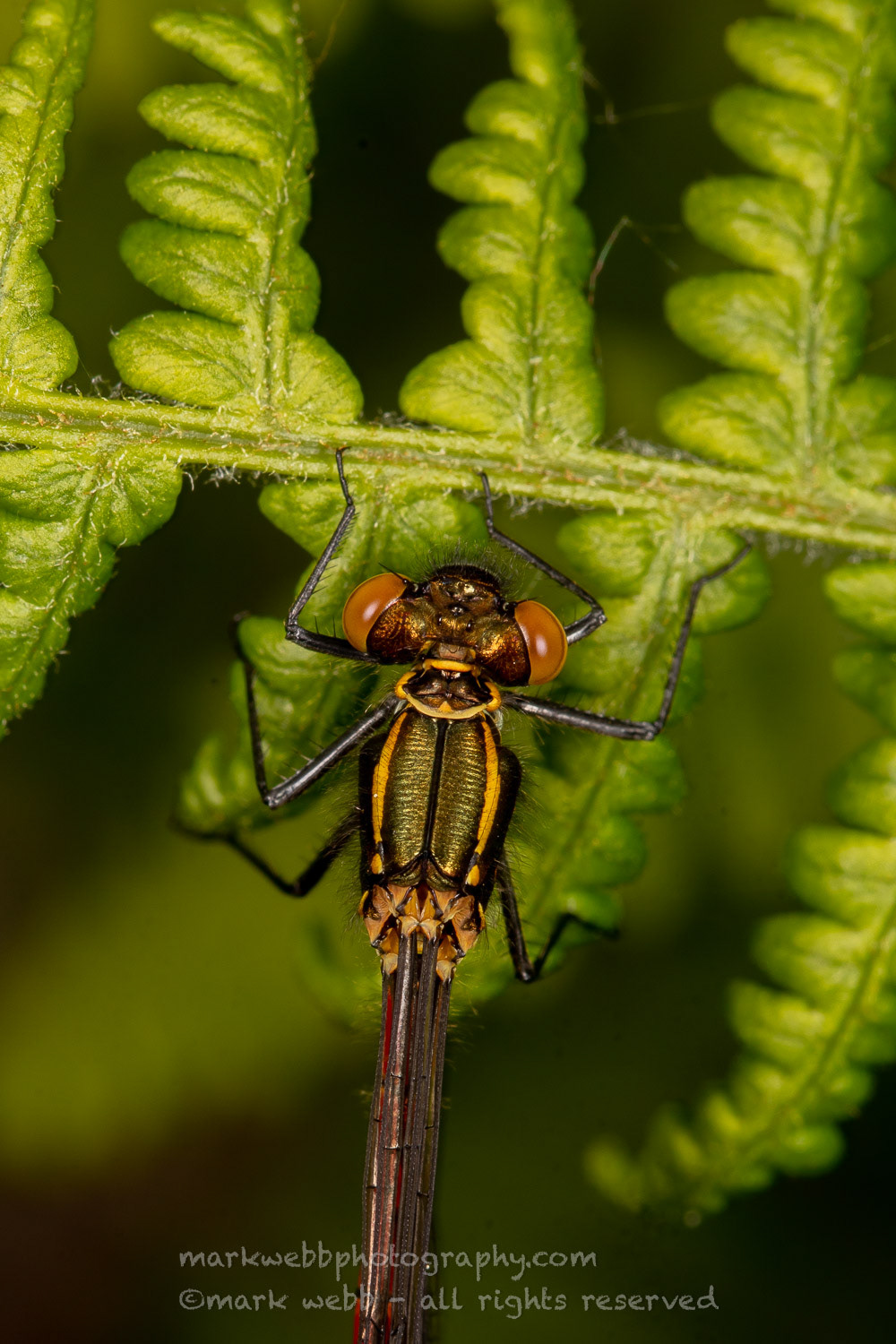
Male
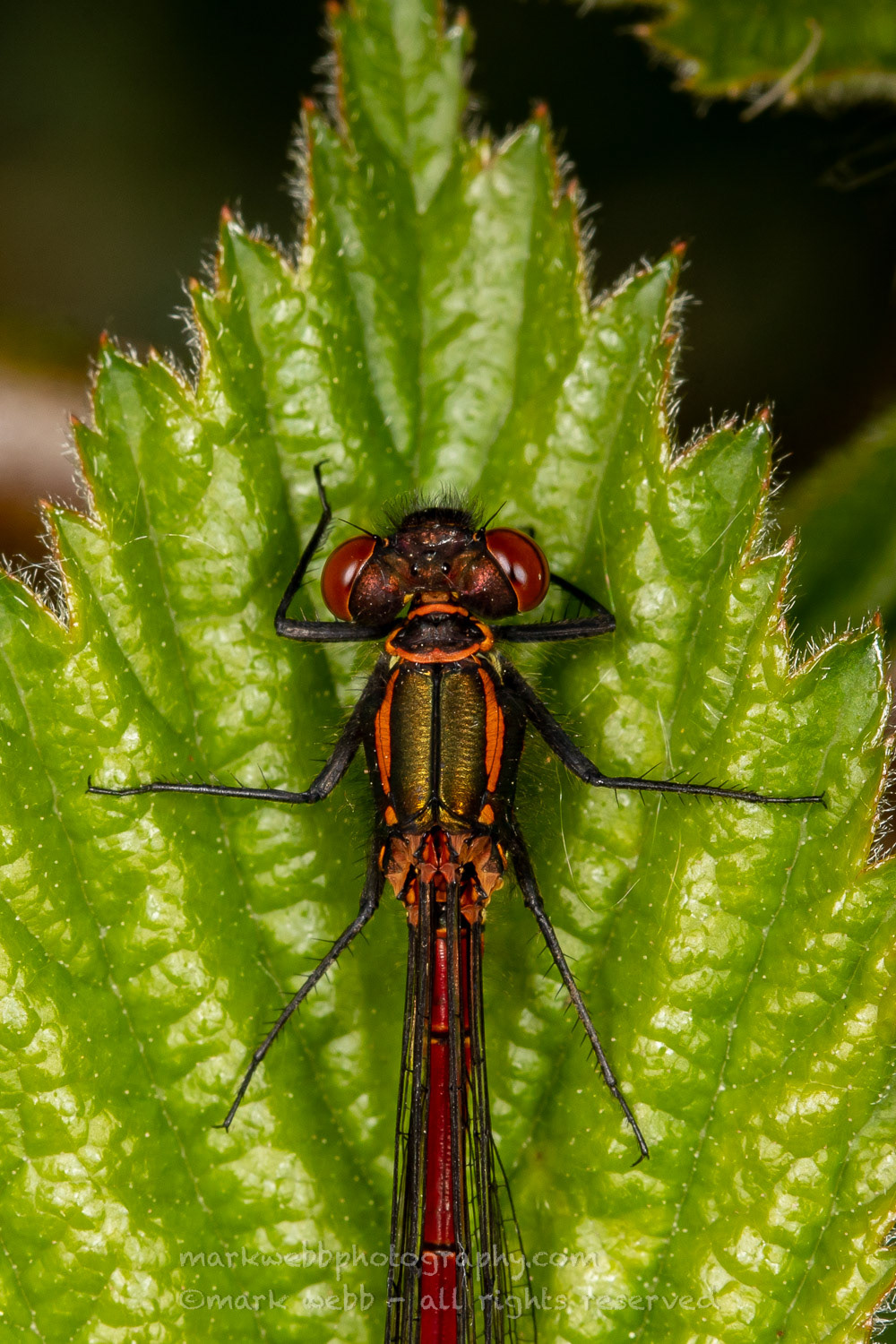
Male

Female (fulvipes)

Female (typica)

Female (typica)

Female (typica although more black than usual)
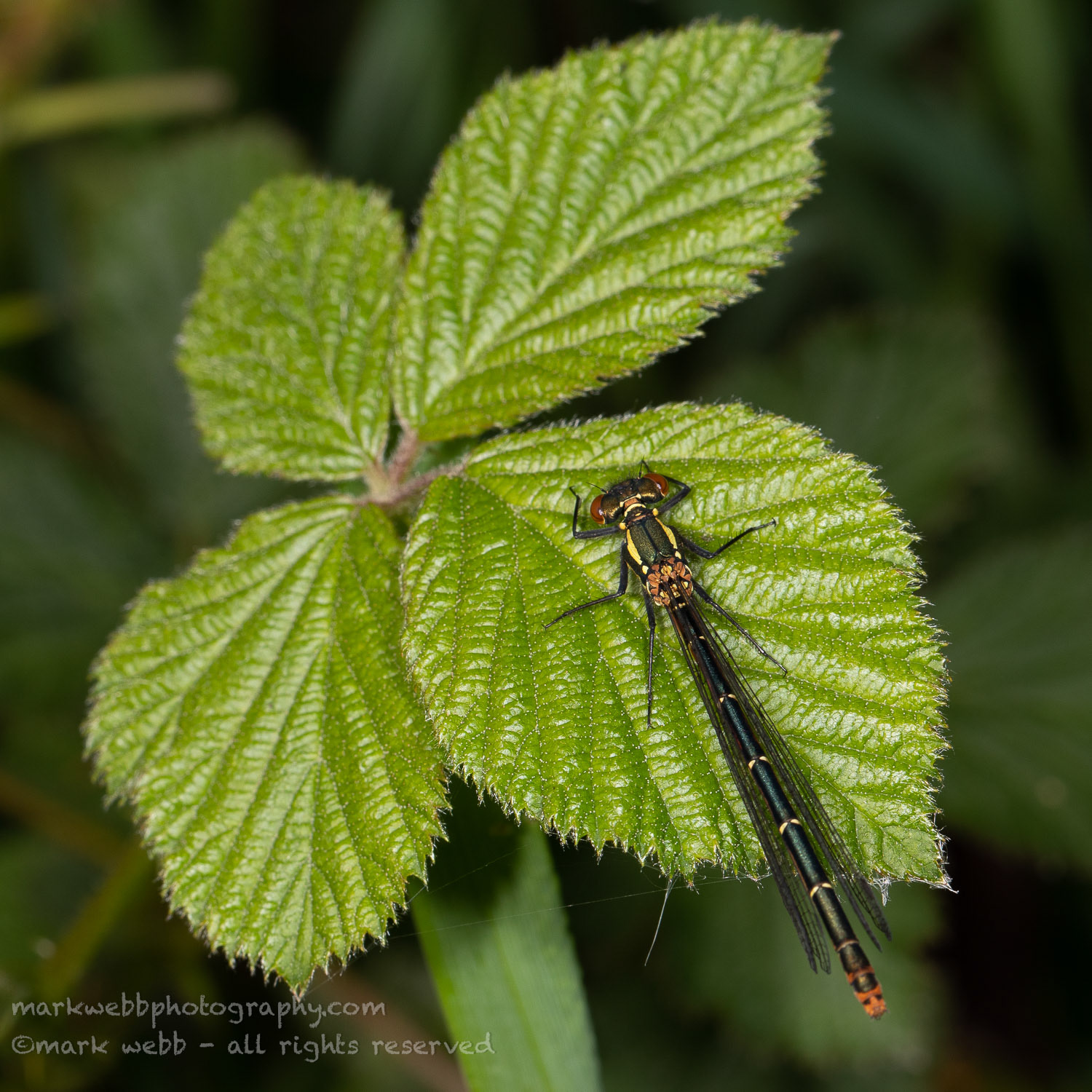
Female (melanotum)

Female (melanotum)
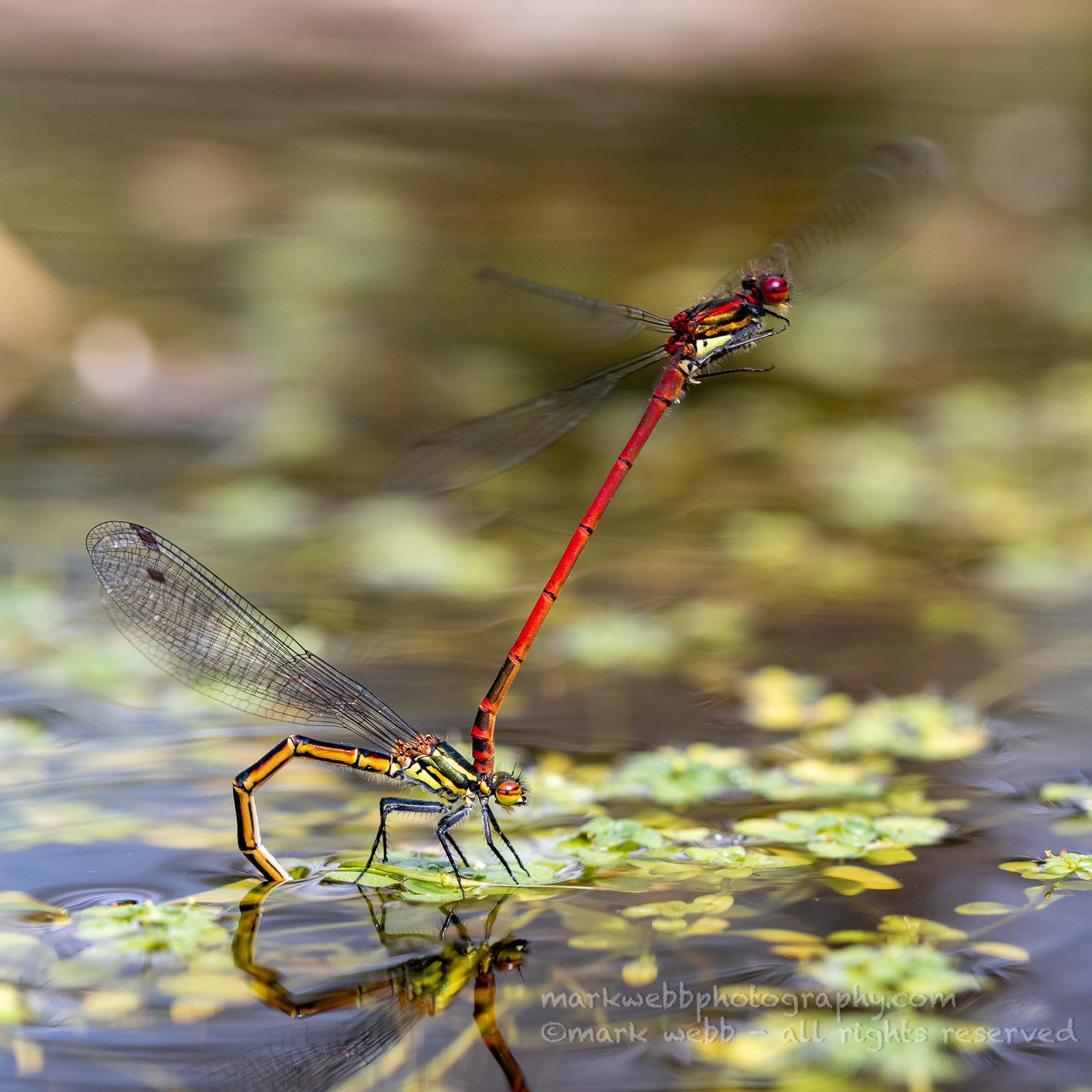
Egg Laying
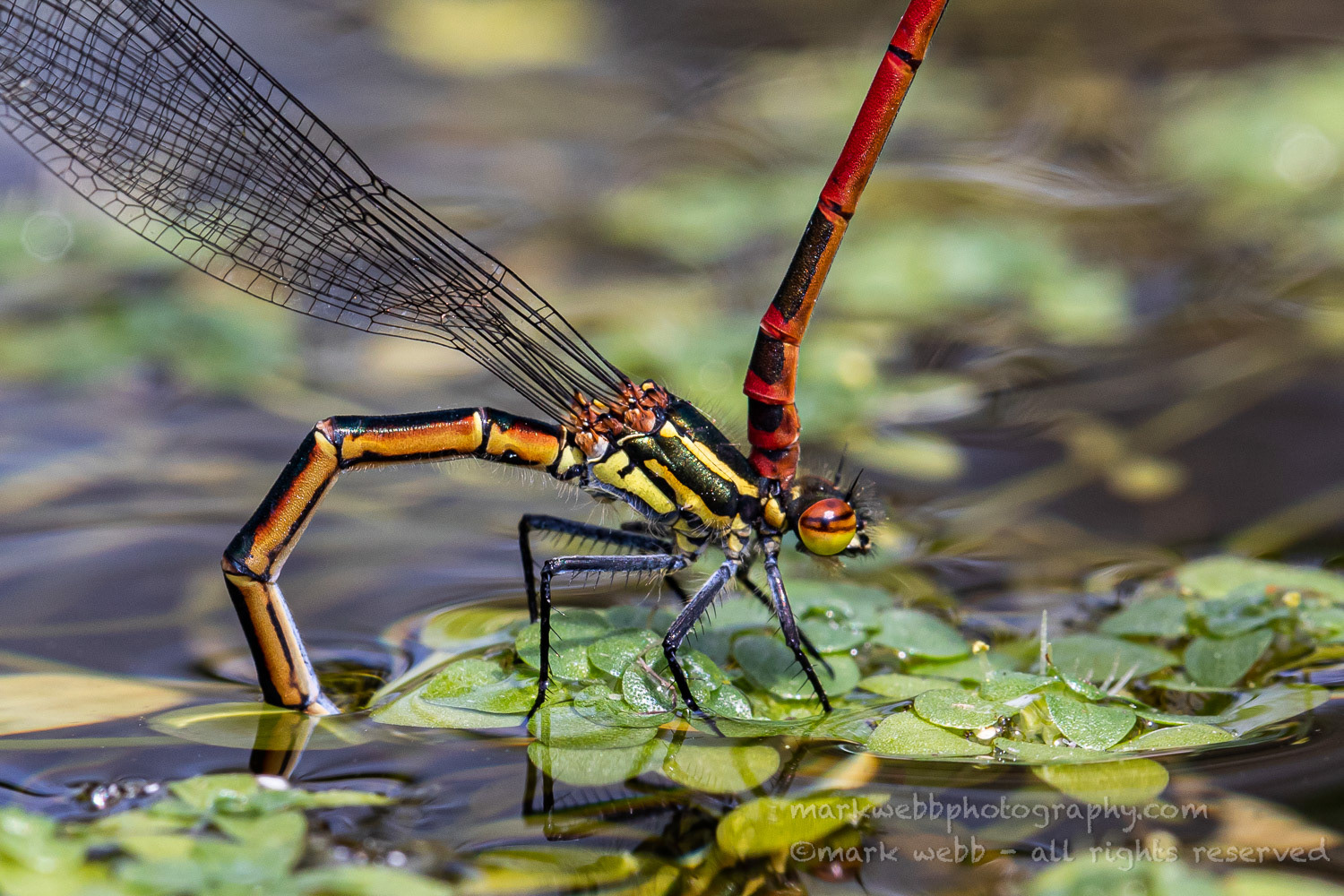
Egg Laying
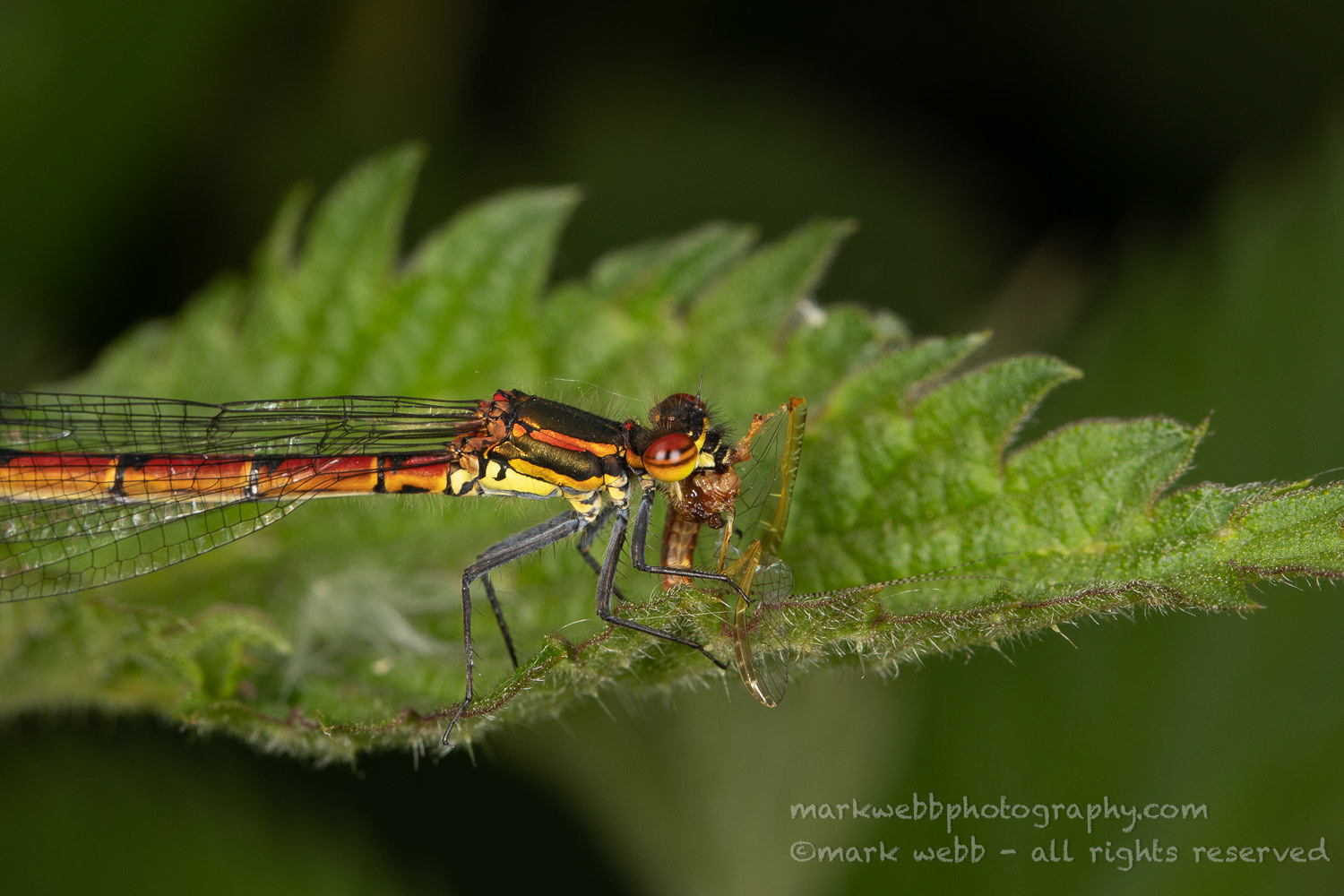
Having a Snack
Want to See
They can be seen in a variety of locations in Somerset.
They do not like fast flowing water.
Especially Good
SWT Westhay Nature Reserve - (Late April / May)
-----------------------------------